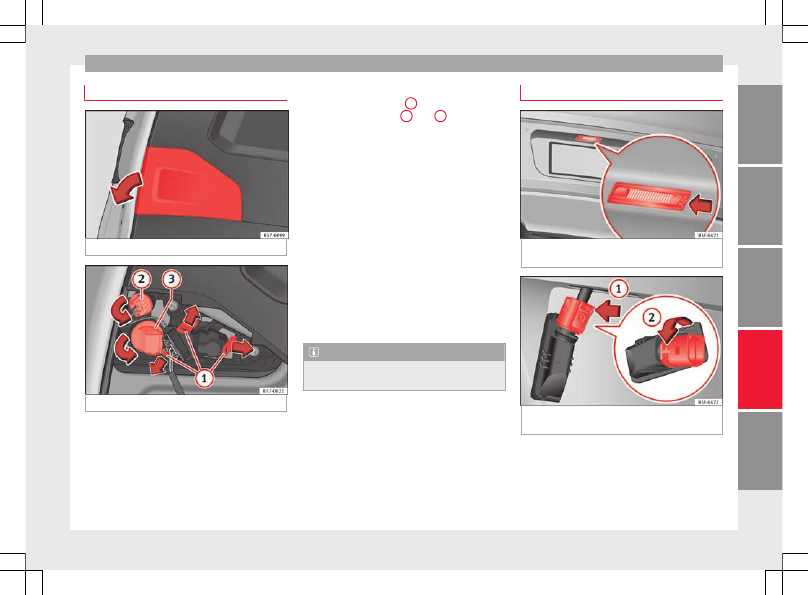Seat Ateca. Service Manual - part 7
-------------------------------------------------------------------------------------------------------------------------------------------------------------

Fuses and bulbs
Rear lights (in the rear lid)
Fig. 112
Rear lid open: remove the lid.
Fig. 113
Remove the bulb holder.
The rear lid must be open to change the
bulbs.
Follow the steps indicated:
Remove the rear lid cover in the direc-
tion indicated
.
1.
Unlock the securing tabs from the bulb
holder
or turn the bulb
Remove the bulb holder from its loca-
tion.
Lightly press the defective bulb into the
bulb holder, then turn it to the left and
remove it.
Fit the new bulb, pressing it into the
bulb holder and turn it to the right as far
as it will go.
Use a cloth to remove any fingerprints
from the glass part of the bulb.
Check that the new bulb works properly.
Carry out the same actions in reverse or-
der for assembly and pay special atten-
tion to placing the bulb holder, ensuring
that the tabs are properly secured.
Note
For LED pilots, you can only change the re-
verse bulb.
2.
3.
4.
5.
6.
7.
8.
Changing number plate light bulbs
Fig. 114
In the rear bumper: number plate
light.
Fig. 115
Number plate light: Remove the bulb
holder.
Follow the steps indicated:
Press the number plate light in the direc-
tion of the arrow
.
Remove the number plate bulb slightly.
»
1.
2.
101